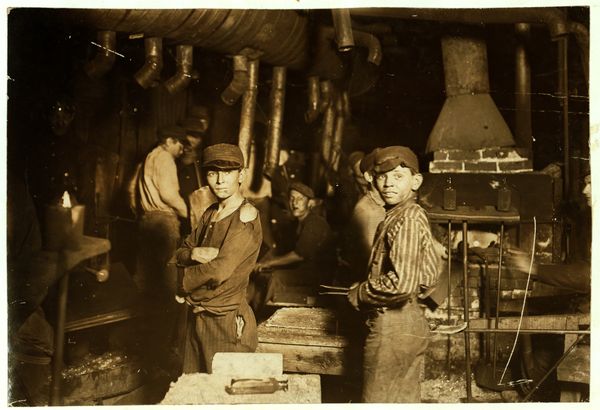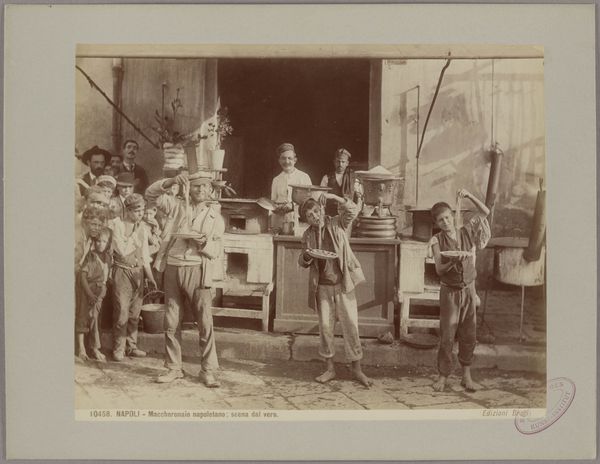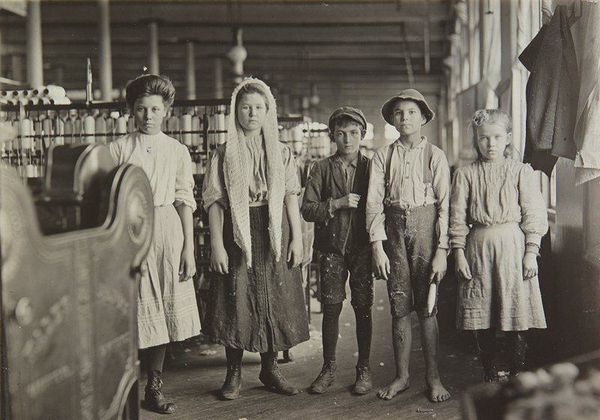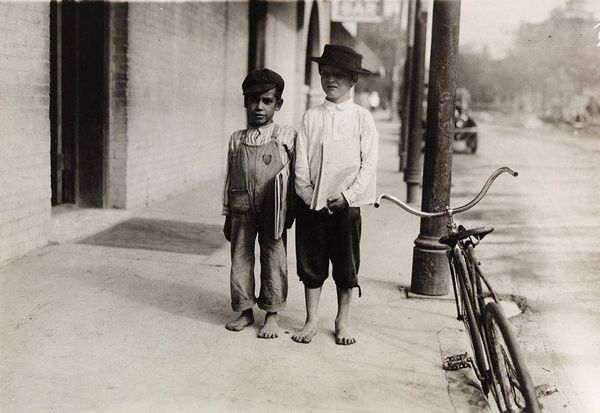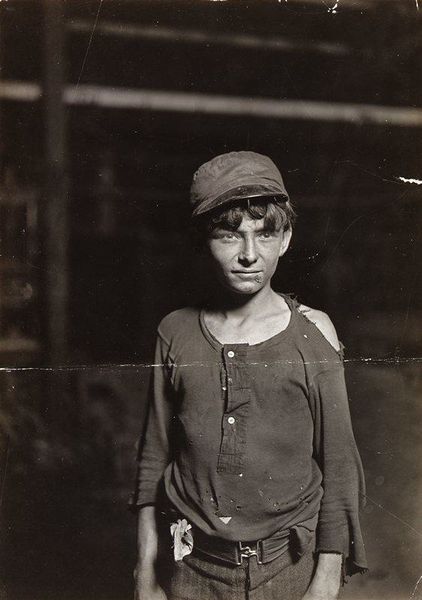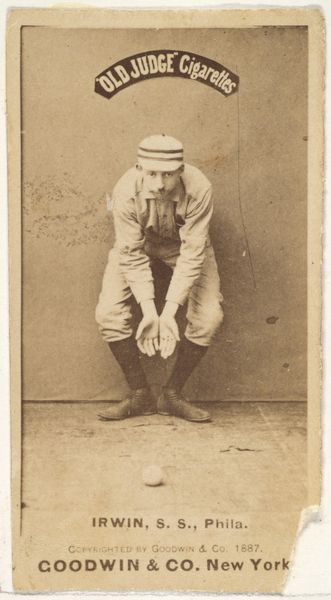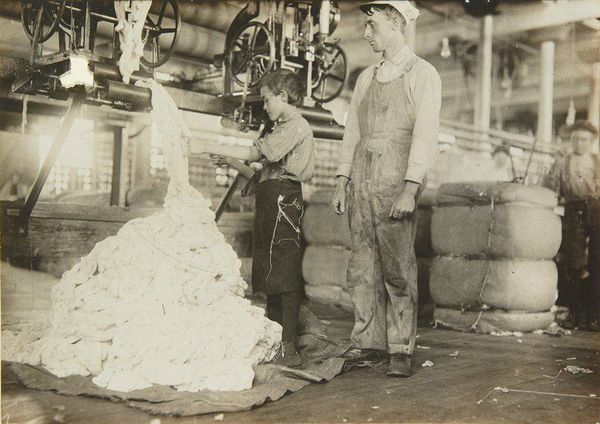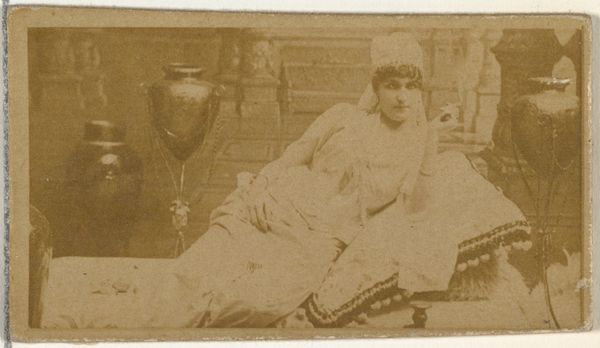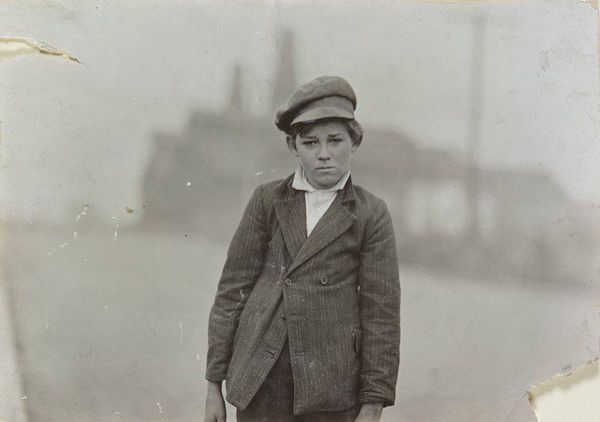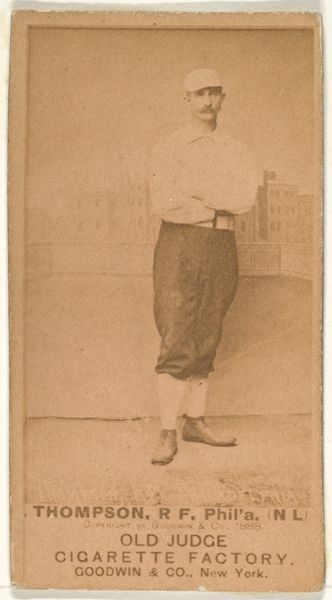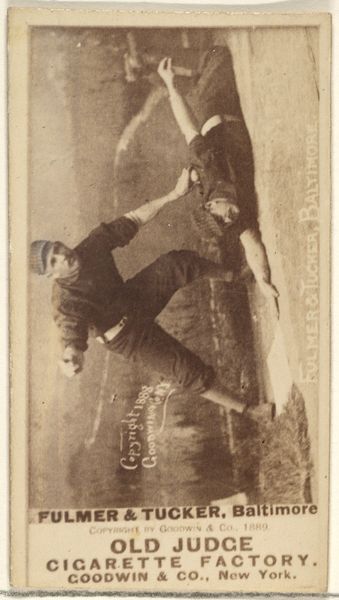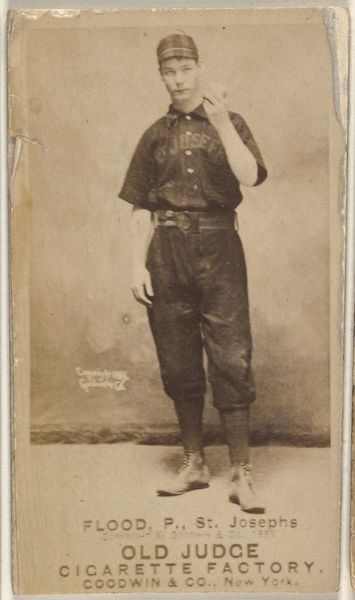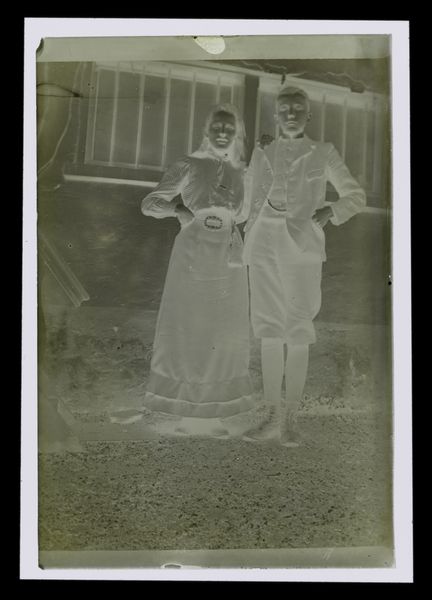
Leopold Daigneau and Arsene Lussier, Back Roping Boys, Burlington, Vermont, 1909 1909
0:00
0:00
photography, gelatin-silver-print
#
portrait
#
film photography
#
photography
#
gelatin-silver-print
#
ashcan-school
#
realism
Copyright: Public domain
Curator: There's a somber gravity to this photograph. I can't help but feel weighed down by the sheer lack of light and what feels like suspended animation. Editor: Well, let me orient us. This is "Leopold Daigneau and Arsene Lussier, Back Roping Boys, Burlington, Vermont, 1909," a gelatin-silver print captured by Lewis Hine. A starkly lit image from Hine's work exposing child labor in early 20th-century America. Curator: The rows of bobbins looming behind them create this repetitive visual that almost suggests they are just components in a larger machine, and their blank stares contribute to that sense. Is there any symbolism that goes beyond what the photograph literally depicts? Editor: Definitely. Hine chose photography precisely for its perceived objectivity, intending these images as evidence. He often posed his subjects directly facing the camera to foster a sense of recognition and empathy. He's not just documenting, but indicting. This was during the rise of the Ashcan School, a time when artists turned their attention to the unvarnished realities of urban life. Curator: What strikes me most is the juxtaposition of the boys' youthful faces and the obvious signs of wear on their clothing. There is so much pathos loaded in those details. The image becomes not just a snapshot of child labor but also a broader statement about lost innocence. Editor: It's an interesting observation because Hine’s work significantly impacted labor laws and contributed to a shift in public sentiment about child labor. He strategically used these images in public lectures, publications, and exhibitions. Their potency arises not just from individual pathos but also from the force of the numbers these two represent. Curator: It's a visual testament to institutional indifference and exploitation. The image certainly transcends its historical moment. Its potency remains. Editor: Absolutely, a constant reminder that artistic output can indeed serve the cause of reform. Its stark reminder continues to fuel conversations about labor ethics even today.
Comments
No comments
Be the first to comment and join the conversation on the ultimate creative platform.
